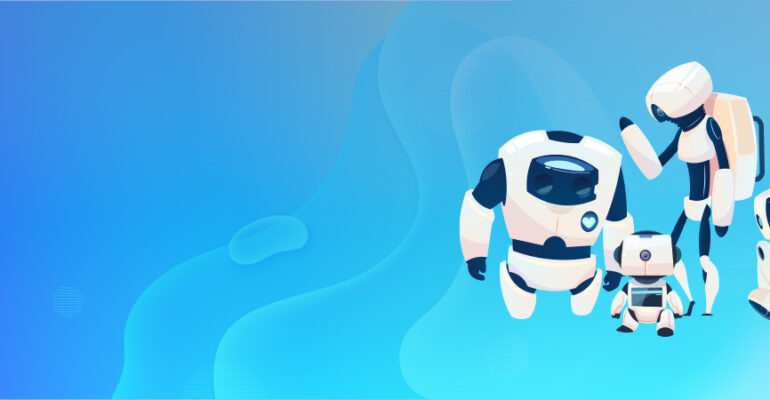
By Teqfocus COE
07th Nov, 2024
Introduction
The AI lexicon has become crowded with terms like bots, copilots and agents. To executives, these labels can sound like marketing buzzwords rather than concrete technologies. Yet each class of automation is distinct in architecture and capability. Choosing the wrong tool can hinder digital transformation or introduce unnecessary risk. This section dissects the differences from both functional and technical perspectives.
Recapping the Foundation
- Bots are rule‑based programs that follow deterministic scripts. They are typically built using logic trees or simple natural‑language processing (NLP). Bots handle FAQs, reset passwords or gather structured data. They do not learn from interactions or deviate from predefined flows.
- Copilots are assistive systems that support a human in real time. They use machine learning models to summarise information, generate code or suggest next steps. Examples include GitHub Copilot for software development and Microsoft Copilot for office productivity. Copilots rely on contextual awareness and a feedback loop but always leave control with the human operator.
- Agents are autonomous entities that not only understand and generate language but also take actions. They maintain context, reason over instructions and can chain multiple tasks together. Agentic AI uses large language models (LLMs), memory modules, retrieval‑augmented generation (RAG), tool invocation and feedback loops to achieve goals. Gartner predicts that one‑third of enterprise software will embed agentic AI by 2028.
Technical Differences
- Architecture & Memory. Bots operate statelessly: each request is processed independently. Copilots maintain short‑term context within a session but rely on human guidance. Agents require persistent memory modules—such as vector stores or database logs—to remember user preferences and past actions. They might use embeddings generated by models like BERT or LLaMA to store and retrieve relevant information.
- Reasoning & Planning. Copilots generally perform single‑step reasoning—answering a question or summarising a document. Agents perform multi‑step reasoning by decomposing tasks, selecting tools (APIs) and orchestrating sequences. Frameworks like OpenAI function calling or LangChain’s agent framework allow LLMs to call specific functions (e.g., search, database update) and evaluate the results.
- Autonomy & Safety. Bots and copilots are human‑in‑the‑loop by design. Agents can act autonomously, so they must include guardrails. This involves safe completion policies, role‑based access control for API actions, prompt validation and outcome verification. Logging and monitoring are essential to prevent unintended actions.
- Integration & Execution. Bots and copilots live inside specific applications (web chat, IDE, Office). Agents integrate across systems via secure APIs and webhooks. They may trigger CRM updates, send emails via cloud services or call external analytics tools. Tools like Salesforce Agentforce provide a unified framework to build, test and deploy such agents across departments.
Use Cases & Industry Relevance
- Healthcare & Life Sciences: Bots handle appointment scheduling and symptom triage. Copilots assist clinicians by summarising patient histories and drafting documentation. Agents coordinate multi‑step tasks like verifying insurance, ordering lab tests and notifying providers of results.
- Insurance: Bots answer policy inquiries. Copilots help underwriters summarise risk profiles. Agents can automatically process claims—collecting data from adjusters, validating policy coverage and initiating payouts under predefined thresholds.
- SaaS: Bots onboard new users. Copilots assist support agents with knowledge‑base search. Agents orchestrate subscription upgrades, cross‑sell campaigns and account retention flows.
Conclusion
Understanding the distinctions among bots, copilots and agents is essential for planning your AI roadmap. Bots are cost‑effective for simple tasks, copilots accelerate human productivity and agents unlock autonomous execution. As agentic AI matures, organisations should start with copilots, implement robust monitoring and then graduate to agents when processes are well‑documented and data governance is in place.
Frequently Asked Questions
Q: Can bots and agents use the same underlying model?
In some cases, yes. A single LLM can power both a chatbot and an agent. The difference lies in the orchestration layer: bots restrict the model to answer questions, while agents can call external tools and execute actions.
Q: How do I ensure an agent doesn’t perform harmful actions?
Implement a guardrail layer that validates user intent, checks required permissions and reviews outputs. Incorporate human‑in‑the‑loop approval for high‑risk actions and use simulation tests to stress‑test prompts.
Q: When should we upgrade from copilots to agents?
Once you have documented workflows, a robust data catalogue and clear metrics for success, agents can automate multi‑step tasks. Start with low‑risk processes like internal ticket triage before moving to customer‑facing operations.
Q: Are there standards for agent interoperability?
Salesforce’s Model Context Protocol (MCP) is emerging as a standard for connecting agents to enterprise systems. It standardises context passing, tool invocation and security policies, enabling plug‑and‑play integration across platforms.
Q: Do agents always require a live internet connection?
Most agents rely on cloud‑hosted LLMs and APIs. For highly secure environments, on‑premises models or hybrid architectures can be deployed, but they require significant infrastructure investment.
